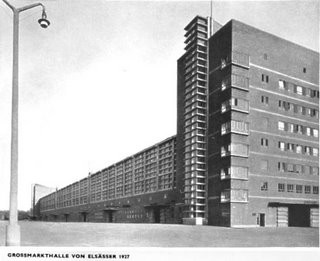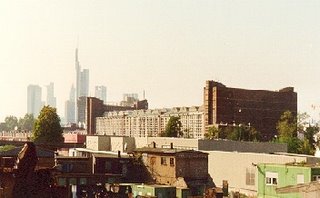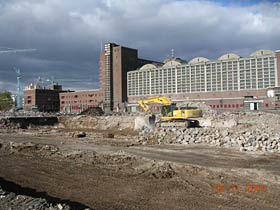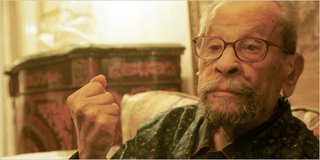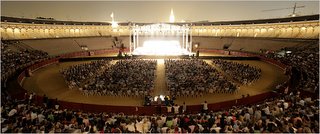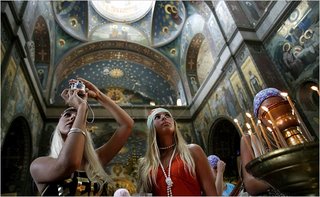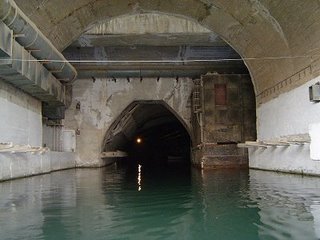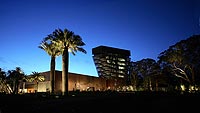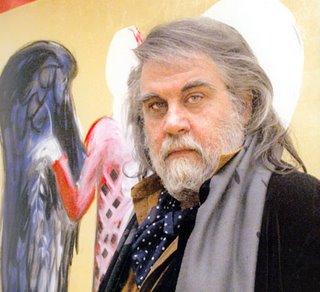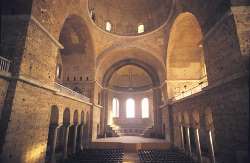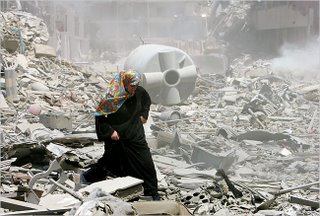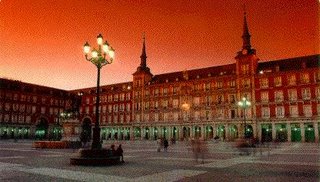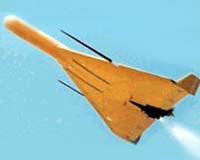"Israel has asked the Bush administration to speed delivery of short-range antipersonnel rockets armed with cluster munitions, which it could use to strike Hezbollah missile sites in Lebanon, two American officials said Thursday.
The request for M-26 artillery rockets, which are fired in barrages and carry hundreds of grenade-like bomblets that scatter and explode over a broad area, is likely to be approved shortly, along with other arms, a senior official said.
But some State Department officials have sought to delay the approval because of concerns over the likelihood of civilian casualties, and the diplomatic repercussions. The rockets, while they would be very effective against hidden missile launchers, officials say, are fired by the dozen and could be expected to cause civilian casualties if used against targets in populated areas.
Israel is asking for the rockets now because it has been unable to suppress Hezbollah’s Katyusha rocket attacks in the month-old conflict by using bombs dropped from aircraft and other types of artillery, the officials said. The Katyusha rockets have killed dozens of civilians in Israel [and the same time Israeli airstrikes have killed over 500 Lebanese civilians -- many women and children].
The United States had approved the sale of M-26’s to Israel some time ago, but the weapons had not yet been delivered when the crisis in Lebanon erupted. If the shipment is approved, Israel may be told that it must be especially careful about firing the rockets into populated areas, the senior official said.
Israel has long told American officials that it wanted M-26 rockets for use against conventional armies in case Israel was invaded, one of the American officials said. But after being pressed in recent days on what they intended to use the weapons for, Israeli officials disclosed that they planned to use them against rocket sites in Lebanon. It was this prospect that raised the intense concerns over civilian casualties.
During much of the 1980’s, the United States maintained a moratorium on selling cluster munitions to Israel, following disclosures that civilians in Lebanon had been killed with the weapons during the 1982 Israeli invasion. But the moratorium was lifted late in the Reagan administration, and since then, the United States has sold Israel some types of cluster munitions, the senior official said.
Officials would discuss the issue only on the condition of anonymity, as the debate over what to do is not resolved and is freighted with implications for the difficult diplomacy that is under way.
State Department officials “are discussing whether or not there needs to be a block on this sale because of the past history and because of the current circumstances,” said the senior official, adding that it was likely that Israel will get the rockets, but will be told to be “be careful.”
David Siegel, a spokesman for the Israeli Embassy in Washington, declined to comment on Israel’s request. He said, though, that “as a rule, we obviously don’t fire into populated areas, with the exception of the use of precision-guided munitions against terrorist targets.” In such cases, Israel has dropped leaflets warning of impending attacks to avoid civilian casualties, he said.
In the case of cluster munitions, including the Multiple Launch Rocket System, which fires the M-26, the Israeli military only fires into open terrain where rocket launchers or other military targets are found, to avoid killing civilians, an Israeli official said.
The debate over whether to ship Israel the missiles, which include the cluster munitions and use launchers that Israel has already received, comes as the Bush administration has been trying to win support for a draft United Nations resolution that calls for immediate cessation of “all attacks” by Hezbollah and of “offensive military operations” by Israel.
Arab governments, under pressure to halt the rising number of civilian casualties in Lebanon, have criticized the measure for not calling for a withdrawal of Israeli troops from southern Lebanon.
While Bush administration officials have criticized Israeli strikes that have caused civilian casualties, they have also backed the offensive against Hezbollah by rushing arms shipments to the region. Last month the administration approved a shipment of precision-guided munitions, which one senior official said this week included at least 25 of the 5,000-pound “bunker-buster” bombs.
Israel has recently asked for another shipment of precision-guided munitions, which is likely to be approved, the senior official said." ...
David S. Cloud "Weapons Israel Asks U.S. to Ship Rockets With Wide Blast" New York Times August 11, 2006
http://www.nytimes.com/2006/08/11/world/middleeast/
11military.html?hp&ex=1155355200&en=4887
d0ebeb1cdf33&ei=5094&partner=homepage
Further information on
Guided Bombs Unit-28 (GBU-28), developed by Raytheon and shipped to Israel via the United Kingdom.

Israeli warplanes have fired thousands of missiles on Lebanon killing over 500 civilians -- including many women and children -- and maiming many thousands. The advanced munitions carried on Israeli warplanes over Lebanon are developed in Texas, the United States, and shipped to Israel by Jumbo jets via the United Kingdom.
Israel has recently requested stepped up munitions shipments including more advanced wide-area cluster munitions which threaten to kill thousands of additional Lebanese civilians. Conscientious U.S. State Department officials are worried about the humanitarian and world-wide diplomatic impacts of Israel's request for expediated, and more advanced, weapons shipments, especially the wide-area multiple-blast cluster bombs.
Photo credit:
www.globalsecurity.org With thanks.




